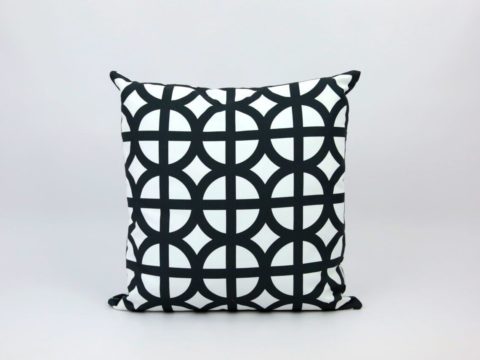Mary, Queen of Scots: Life Story
Chapter 23 : Fotheringhay
On 21st 1586 August, Paulet suggested that Mary ride out on a short hunt. Delighted at the prospect of fresh air, Mary agreed enthusiastically. Shortly, the party was intercepted by Sir Thomas Gorges, who loudly accused her of conspiring against the queen. Her servants were arrested and sent to London, and Mary taken to another house at Tixall, whilst her chambers at Chartley were searched.
She was returned to Chartley to find all her possessions taken – even her money was then removed, leaving her nothing to pay her servants.
Babington and his confederates were tried and hanged, drawn and quartered although Mary was not mentioned in the indictment.
Mary was taken from Chartley to the old York castle at Fotheringhay in Northamptonshire, arriving there on 25th September. On 1st October, Paulet suggested that she should confess her crimes, before being condemned by law. Mary informed him that, although she was aware of being a sinner, she was a sovereign queen, and answerable to no-one. As she could not offend, so she need not ask pardon and nor would she accept it from another human being.
Twenty-four commissioners were summoned to try Mary under the Act of Association. Shrewsbury tried to excuse himself, but Cecil insisted. The French ambassador requested Elizabeth to allow Mary counsel for her own defence, but was brusquely rejected. Not only was Mary unable to consult counsel, she was also deprived of any assistance in preparing her defence.
The trial itself had no basis in law – Mary was not a subject of the English queen, and thus, as she frequently repeated, not subject to English law. Elizabeth was well aware of this, and also of the risks inherent in permitting a sovereign to be tried at all. Nevertheless, the threat of Spanish invasion and Catholic resurgence was now so feared that she permitted the trial to proceed.
Initially, Mary categorically refused to appear at the trial, as she would not acknowledge its legality, Eventually, she consented, despite her impassioned speeches, and repeated rejection of the right of the court to try her.
The commission did not pronounce sentence immediately. Instead, it was left to Parliament to pronounce that, the case having been proved against Mary, she must be sentenced to death. Elizabeth continued to prevaricate. Mary was informed in November that Parliament demanded her death, and began to set her affairs in order. But still Elizabeth did not sign the death warrant. It was not until February that the warrant was signed, Paulet having refused to quietly dispatch his prisoner, no matter how much he disliked her.
On the evening of 7th February 1587, Mary was informed that she would die the following morning. She was refused a Catholic priest, and rejected the services of a Protestant minister. She penned a last letter to her brother-in-law, Henri III of France, requesting that he succour her servants. She also hoped to be buried in Rheims.
The following morning, she was executed in the great hall at Fotheringhay. She sent a last message to her friends that she had ‘died a true woman of her religion and a like a true Scottish woman and a true French woman'.
Mary’s body was wrapped in lead, and left at Fotheringhay for some months, presumably for fear of public disturbances. Eventually, in July, it was interred at Peterborough Cathedral, under the royal banner of the Scottish lion, with the Countess of Bedford as chief mourner. Naturally, the ceremony was a Protestant one.
Some thirty years later, Mary’s son, James, had her reinterred in Westminster Abbey.
Bibliography
Archives, The National. “The National Archives - Exhibitions - Uniting the Kingdoms?” Text. Accessed September 10, 2017. http://www.nationalarchives.gov.uk/utk/scotland/popup/carberry.htm.
Brown, Keith M. Review of Review of Lords and Men in Scotland: Bonds of Manrent 1442-1603, by Jenny Wormald. The Scottish Historical Review 66, no. 181 (1987): 88–90. doi:10.2307/25530243.
Emond, William K. Review of Review of Mary Queen of Scots: A Study in Failure, by Jenny Wormald. Albion: A Quarterly Journal Concerned with British Studies 20, no. 4 (1988): 687–88. doi:10.2307/4050247.
Fraser, Antonia. Mary Queen of Scots. Weidenfeld & Nicholson, 1969.
Guy, John A. My Heart Is My Own: The Life of Mary Queen of Scots. London: Fourth Estate, 2009.
“Henry VIII: December 1542, 11-20 | British History Online.” Accessed September 10, 2017. http://www.british-history.ac.uk/letters-papers-hen8/vol1/pp655-674.
“Inchmahome Priory.” Accessed September 2, 2017. https://www.historicenvironment.scot/visit-a-place/places/inchmahome-priory/.
Lee, Maurice. Review of Mary Queen of Scots: A Study in Failure, by Jenny Wormald. The Catholic Historical Review 74, no. 4 (1988): 618–618. doi:10.2307/25022905.
Marshall, Rosalind K. Queen Mary’s Women: Female Relatives, Servants, Friends and Enemies of Mary, Queen of Scots. Edinburgh: John Donald, 2006.
———. Scottish Queens, 1034-1714. Edinburgh: John Donald, 2007.
Porter, Linda. Crown of Thistles: The Fatal Inheritance of Mary Queen of Scots, 2014.
Weir, Alison. Mary, Queen of Scots and the Murder of Lord Darnley. London: Vintage, 2008.
Wormald, Jenny. Mary Queen of Scots: A Study in Failure. London: G. Philip, 1988.
